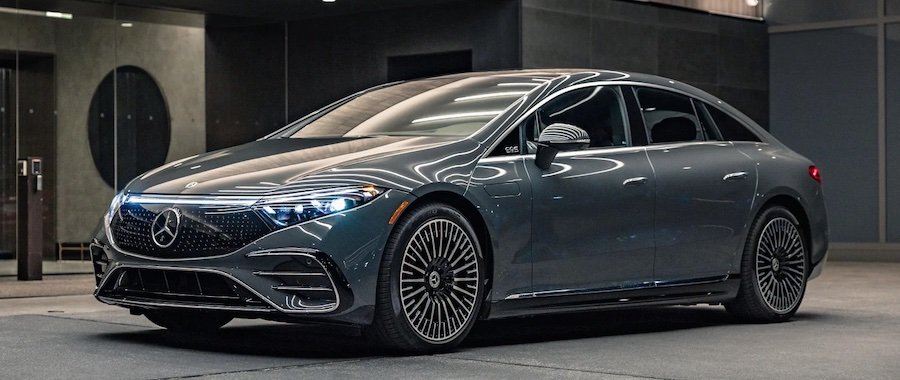Mercedes-Benz EQS Loses Nearly Half Its Value After One Year, Study Says

It's no secret that new cars take a big hit on value once they leave the dealership lot. Some take bigger hits than others. Then there's the Mercedes-Benz EQS. With sedan, SUV, and AMG trims combined, the luxury EV loses a whopping 48.7 percent of its average new price after just one year of ownership, according to a study published by iSeeCars. That equates to $65,143—essentially the same as writing off an entire E-Class.
It's not the only electric vehicle on iSeeCar's list of fastest-depreciating cars, either. Five of the top ten vehicles in the study are EVs, starting with the Nissan Leaf in second place. It only loses $15,786 on average, but with a considerably lower starting price, we're still talking about a 45 percent drop. Jaguar holds the distinction of having the highest-depreciating combustion vehicle with the F-Pace in third, losing $28,555, or 35.4 percent of its value. Alfa Romeo isn't far behind with the Giulia at 33.4 percent, dropping $16,297 on average. The Kia EV6 nabs fifth 33.3 percent, losing $18,081 on average.
What about vehicles that aren't taking such a financial beating? The study shows lots of love for hybrid vehicles, but it's the plucky Kia Rio that turned our heads. It seems folks in the US still want an inexpensive combustion-powered subcompact, because it only lost $21 on average after one year of use. It's a drop of just 0.1 percent, meaning a lightly used Rio still fetches a nearly-full sticker price. The fact that it was dropped from Kia's lineup for 2024 could be a factor, too.
Saving face for Mercedes is the G-Class, which ranks third on the least-depreciating scale with a 2.3-percent drop, or $4,587 on average. Meanwhile, the Ford Maverick only loses around $1,400 on average. It holds fourth and fifth place here, representing the standard combustion model and the hybrid at 4.1 and 4.4 percent.
The first-place Land Rover Range Rover has the curious distinction of selling 2.8 percent over its new sticker price on average after one year. We suspect this is skewed due to the new 2024 model slowly reaching the market, pushing up demand for used SUVs as impatient buyers get tired of waiting or refuse to pay high dealer markups. The iSeeCars team mentions this theory as well.
The study evaluated over 1.6 million new and used listings from January through March 2024, incorporating 2023 and 2024 model-year vehicles. In this instance, "used" equals a vehicle having mileage within 20 percent of 13,476 miles, largely considered average mileage for a year of use. Low-volume niche vehicles were excluded from the research.
It's interesting to see a clear drop in EV prices versus strong residuals for used hybrids. This supports the softening demand for fully electric vehicles we've seen, while hybrids remain desirable choices for many. The study further breaks down new-versus-used vehicles by price brackets and locations in the US, which you can see at the source link below.
Related News
